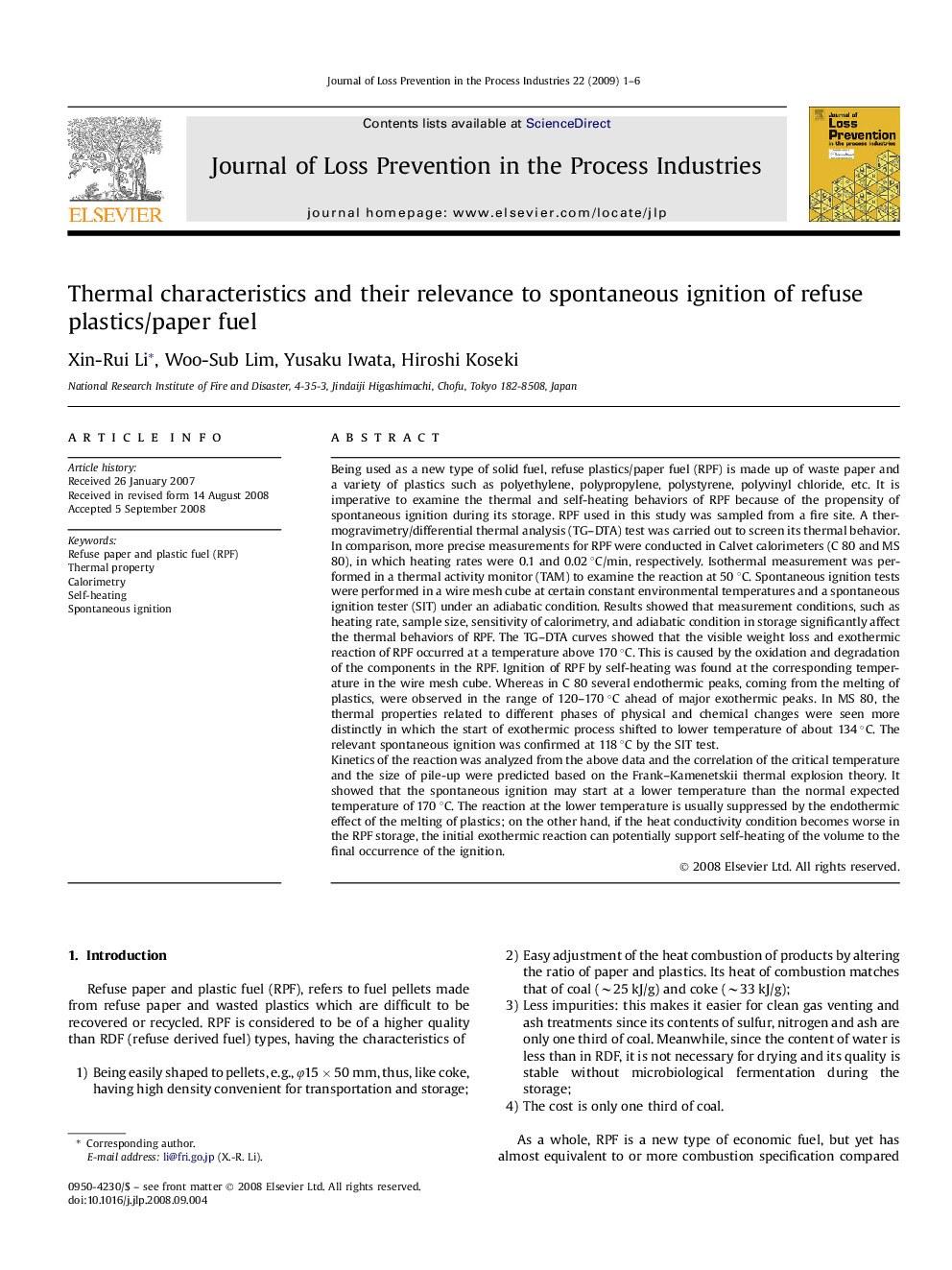| کد مقاله | کد نشریه | سال انتشار | مقاله انگلیسی | نسخه تمام متن |
|---|---|---|---|---|
| 587199 | 878274 | 2009 | 6 صفحه PDF | دانلود رایگان |

Being used as a new type of solid fuel, refuse plastics/paper fuel (RPF) is made up of waste paper and a variety of plastics such as polyethylene, polypropylene, polystyrene, polyvinyl chloride, etc. It is imperative to examine the thermal and self-heating behaviors of RPF because of the propensity of spontaneous ignition during its storage. RPF used in this study was sampled from a fire site. A thermogravimetry/differential thermal analysis (TG–DTA) test was carried out to screen its thermal behavior. In comparison, more precise measurements for RPF were conducted in Calvet calorimeters (C 80 and MS 80), in which heating rates were 0.1 and 0.02 °C/min, respectively. Isothermal measurement was performed in a thermal activity monitor (TAM) to examine the reaction at 50 °C. Spontaneous ignition tests were performed in a wire mesh cube at certain constant environmental temperatures and a spontaneous ignition tester (SIT) under an adiabatic condition. Results showed that measurement conditions, such as heating rate, sample size, sensitivity of calorimetry, and adiabatic condition in storage significantly affect the thermal behaviors of RPF. The TG–DTA curves showed that the visible weight loss and exothermic reaction of RPF occurred at a temperature above 170 °C. This is caused by the oxidation and degradation of the components in the RPF. Ignition of RPF by self-heating was found at the corresponding temperature in the wire mesh cube. Whereas in C 80 several endothermic peaks, coming from the melting of plastics, were observed in the range of 120–170 °C ahead of major exothermic peaks. In MS 80, the thermal properties related to different phases of physical and chemical changes were seen more distinctly in which the start of exothermic process shifted to lower temperature of about 134 °C. The relevant spontaneous ignition was confirmed at 118 °C by the SIT test.Kinetics of the reaction was analyzed from the above data and the correlation of the critical temperature and the size of pile-up were predicted based on the Frank–Kamenetskii thermal explosion theory. It showed that the spontaneous ignition may start at a lower temperature than the normal expected temperature of 170 °C. The reaction at the lower temperature is usually suppressed by the endothermic effect of the melting of plastics; on the other hand, if the heat conductivity condition becomes worse in the RPF storage, the initial exothermic reaction can potentially support self-heating of the volume to the final occurrence of the ignition.
Journal: Journal of Loss Prevention in the Process Industries - Volume 22, Issue 1, January 2009, Pages 1–6